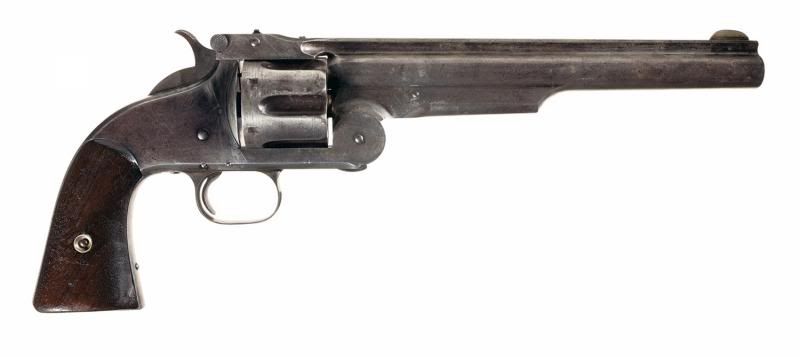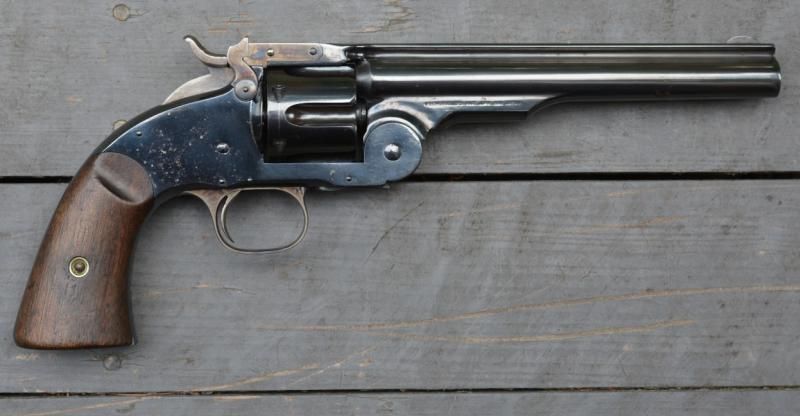When S&W was asked to submit its No 3 Model to the Gov to be tested along side the Colt 1873, the Gov. originally wanted it chambered in .45 Long Colt.
S&W said no, as they didn't want to redesign the gun and really had no ability to stop production and retool because they were working at near capacity making guns for Russia.
Howdy
I suspect this quote may be every so slightly incorrect. The first cartridge revolver the US govt tested and bought was what we call today the S&W American Model. This was a large frame Top Break revolver, chambered for the 44 S&W cartridge. Not the 44 Russian, the 44 S&W used a heeled bullet, that is to say the outside diameter of the bullet was the same as the OD of the case. The Army purchased 800 Blue and 200 Nickel plated revolvers, in I believe 1871. This was before any Colt Single Action Armies were purchased.
American Model
As early as 1871 George Schofield was working on improvements to the American model, mostly redesigning the barrel latch to be frame mounted rather than barrel mounted as it had been on the American model. He wanted a mounted soldier to be able to open the revolver with one hand to reload while riding. This can be done by opening the latch with the thumb and brushing the barrel against the leg to shove it open. I'm not much of a horseman, but I can do it while sitting in a chair. Schofield was a military man, not an employee of S&W. He took out patents on his improved latch and S&W had to pay him royalties. Crafty old New Englander that Daniel Wesson was, he set his engineers to work to find a way around Schofield's patents. S&W never produced enough Schofield models to patent their own latch.
Schofield Model
I do not believe the Govt approached S&W to test the Schofield, I believe it was the other way around. Although S&W was up to their ears producing the Russian model, they did not want to be left out of all the lucrative govt contracts.
Yes, it is true that the govt wanted a 45, not 44 caliber revolver, which was not a problem, and it was also true that S&W did not want to come up with new tooling for a revolver long enough to shoot the 45 Colt cartridge. That is why the 45 Schofield cartridge was shorter. S&W only sold about 3,000 1st Model Schofields and about 6,000 2nd models to the Army. Then they turned their attention back to the lucrative Russian models, eventually selling about 150,000 to the Russians, Turks, and Japanese.
Later, S&W realized their error in not lengthening the cylinder and frame for a longer cartridge. The New Model #3, in addition to having a 1 7/16" cylinder chambered for 44 Russian and a bunch of other cartridges, also had a version with a 1 9/16" cylinder, and a slightly longer frame, to accommodate 44-40 and 38-40. the 44-40 model was called the New Model Number Three Frontier and only 2072 were made. The 38-40 version is very rare, only 74 were made.



